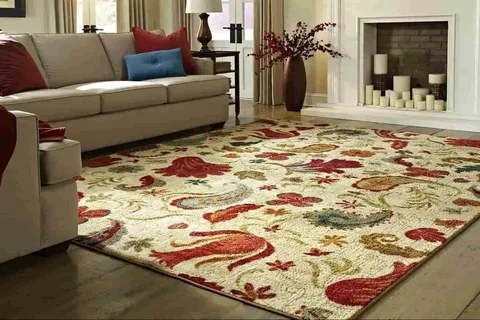Using Carpets to Define Spaces in Open Floor Plans

Open floor plans have become increasingly popular in modern home design, offering spaciousness, flexibility, and connectivity between different areas of the house. However, creating distinct zones within an open floor plan can present challenges in terms of defining separate living spaces while maintaining a cohesive overall aesthetic. Carpets, with their versatility and ability to anchor and delineate areas, offer a practical and stylish solution to this design dilemma.
In this exploration, we delve into the art of using carpets to define spaces in open floor plans, harnessing their design potential to enhance functionality, visual appeal, and comfort within the home.
Understanding Open Floor Plans
Open floor plans are characterized by expansive, interconnected spaces that flow seamlessly from one area to another, typically encompassing the kitchen, living room, dining area, and sometimes even additional zones such as home offices or reading nooks. While open layouts promote interaction and a sense of airiness, they can also lack defined boundaries between different functional areas, leading to a feeling of spatial ambiguity.
The Role of Carpets in Space Definition
Carpets Dubai serve as versatile design elements that can delineate and define distinct zones within an open floor plan, effectively transforming a vast expanse into intimate, purposeful spaces. By strategically placing carpets, homeowners can create visual boundaries, establish focal points, and imbue each area with its unique identity and functionality.
Creating Zones with Carpets
In open floor plans, carpets act as visual anchors that help organize and structure the space. By selecting carpets of varying sizes, shapes, and textures, homeowners can demarcate specific areas for different activities, such as lounging, dining, or entertaining.
For instance, a large area rug placed beneath a seating arrangement in the living room instantly defines the conversation area, while a smaller rug positioned under the dining table delineates the eating space within the open layout. Additionally, runners or rugs can be used to guide traffic flow and connect adjacent areas, providing a sense of continuity and cohesion throughout the space.
Harnessing Color and Pattern
Color and pattern play pivotal roles in the design and functionality of carpets within open floor plans. Bold, vibrant rugs can inject personality and visual interest into neutral or monochromatic interiors, serving as focal points that draw the eye and define specific zones.
Conversely, subtle, understated carpets can create a sense of serenity and cohesiveness within busier or more eclectic spaces, allowing other design elements to take center stage. When choosing carpets, it’s essential to consider the overall color scheme and aesthetic of the room, as well as the desired mood and atmosphere you wish to evoke.
Layering for Depth and Dimension
Layering carpets is a creative technique that adds depth, dimension, and visual intrigue to open floor plans. By layering rugs of different sizes, shapes, and textures, homeowners can create dynamic compositions that reflect their personal style and preferences.
For example, layering a textured jute rug beneath a plush wool rug adds warmth and texture to the living area, while delineating the seating space within the larger open plan. Similarly, layering runners or mats in high-traffic areas such as entryways or corridors helps define pathways and prevent wear and tear on the underlying flooring.
Balancing Scale and Proportion
When using carpets to define spaces in open floor plans, it’s crucial to consider scale and proportion to ensure a harmonious and balanced composition. Oversized rugs can overwhelm smaller areas, while undersized rugs may appear insignificant or disjointed within larger spaces.
By selecting carpets that complement the scale and proportions of the room, homeowners can create visually pleasing arrangements that enhance the overall flow and functionality of the space. Experimenting with different sizes, shapes, and placements allows for flexibility and customization, enabling individuals to tailor their carpet arrangements to suit their specific needs and preferences.
Conclusion
Carpets offer a versatile and effective means of defining spaces within open floor plans, enabling homeowners to create zones that are both functional and aesthetically pleasing. By strategically placing carpets, harnessing color and pattern, layering for depth and dimension, and balancing scale and proportion, individuals can transform expansive interiors into intimate, inviting environments that cater to their lifestyle and design sensibilities.
Whether used to delineate seating areas, dining spaces, or transitional zones, carpets serve as invaluable tools in shaping the visual and spatial dynamics of open floor plans, fostering a sense of coherence, comfort, and livability within the home. With creativity, imagination, and a keen eye for design, homeowners can leverage the transformative power of carpets to enhance the beauty and functionality of their open living spaces.


